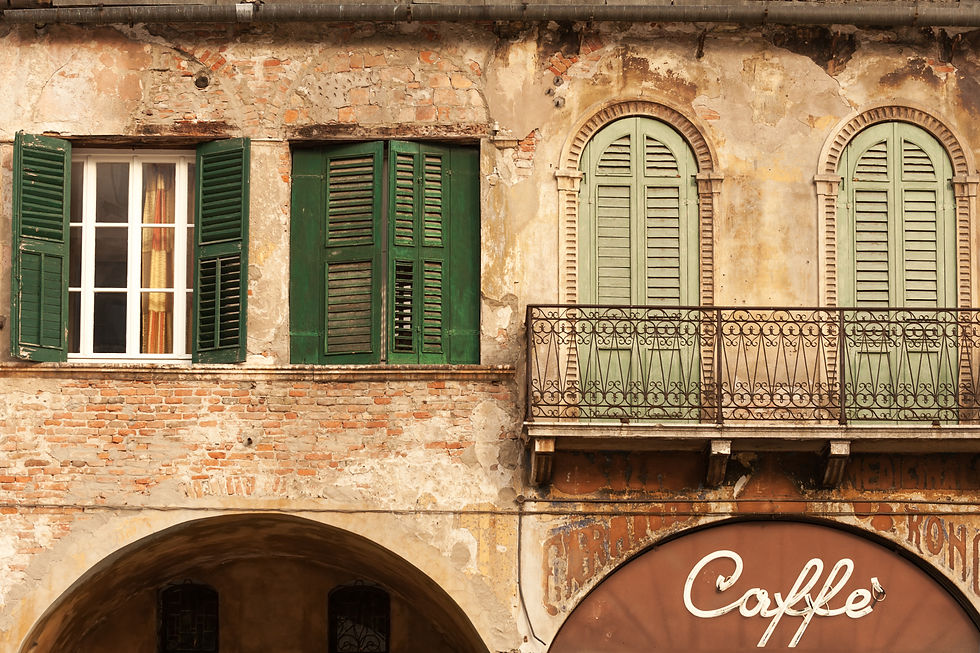Europe's Oldest Cafes
- Nakie Uzeiri
- Apr 15, 2017
- 4 min read

Cat cafes and cereal cafes have become average occurrences nowadays, but what ever happened to tradition? It seems almost as if everything is solely based about ‘originality’ and thinking out of the box, sometimes we all just need to take a big step back and fall into the comfort of history and tradition by giving it some appreciation.
Modernism is fascinating and new ideas are refreshing, but one can’t try and just outdo something as beautiful as say, the Sistine Chapel. Those mouth dropping images are hard to come across, just like some of the oldest working cafes around.
So, New Yolk digs up the dirt (coffee grinds?) on some of the oldest, still running cafes around Europe. From discovering the so called “magical fruit” (a label that I wholeheartedly agree with) in Ethiopia back in the 11th century, to being spread across the Arabian Peninsula in the 14th, it took until 1555 for us humans to begin drinking the globe trotting plant the way we consume it today. “Coffeehouses and coffee culture soon became an integral part of Istanbul social culture,” in Istanbul was where the first ever coffeehouse, Kiva Han, opened up. “People came here throughout the day to read books and beautiful texts, play chess and backgammon and discuss poetry and literature.”
While coffee vastly spread across the European continent starting in Italy in 1615, around 35 years later England saw its first coffeehouse open up called “the Angel” in Oxford. England holds some of the oldest coffeehouses that are still running in all of Europe, like Queens Lane Coffee House, which during the seventeenth century was a “favorite haunt of scholars to debate issues of the times.”
The Algerian Coffee Store, which first opened its doors all the way back in 1887 is located and still running in London. I decided to head over to one of London’s oldest coffeehouses and try it out. I had no idea what to expect when going into this classic gem in the midst of London’s Soho. The store has a perfect little charm to go along with it’s history and is still using its original display cases and countertop.
When you enter the small store you either head to the wooden counter to get your ground up magic beans or head to the right of the (very busy) shop has it’s little espresso cart. While I passed up the sign holding the low prices, I was surprised at hearing “That will be £1.20,” after receiving my frothy beverage.
The Algerian Coffee Store has over 80 different types of imported blends. “The range of coffees here is improbably large, with a high number of house blends alongside single-origin beans, flavored beans, rarities and Fair Trade coffees.”
Whether you’re going to pick up your £1 espresso or ground coffee beans from around the world, this 128 year old pit stop is the place to go for a strong cup of joe.
If we hop on the Eurostar over to Paris we will find ourselves at the one of the oldest still functioning cafe in the lovely city of Paris.
Cafe Le Procope was opened in 1686 and still resides right there in the Latin Quartier. It used to be a place “frequented by renowned poets, playwrights, actors and musicians,” and still remains one of Paris’s most historical sites as it was also the first literary cafe.
It is also linked to be the creation point of the first modern Encyclopedia.
Following Cafe Le Procope is Cafe Tomaselli in Salzburg, Austria that was originally founded in 1700. This is argued to be the oldest cafe in Europe, and at least the oldest ‘Viennese’ cafe, since some say Cafe Le Procope isn’t necessarily a fully ‘coffee cafe’ any longer and more of a restaurant.
With inspiring and a long history, Cafe Tomaselli has been family run and owned from 1700 to present day from being passed down to each generation of the Tomaselli family. Even from the earliest days of business, “the Cafe was an important social and private meeting point for Salzburg’s middle class.”
Coffeehouses and shops were normally male-dominated and were deemed an inappropriate place for women to visit. When the cafe had been passed down to Carl Jr Tomaselli in 1891, “an elegant ladies’ parlor was opened on the first floor,” of Cafe Tomaselli. “Under his leadership, the tradition of the male-dominated coffee house ceased to exist.”
Twenty years later in Venice, Italy Caffe Florian was born and is argued to be older than Tomaselli due to the fact that Florian is the one that still remains in its true original location. Just like Tomaselli, Caffe Florian was one of the only meeting places during the time period that allowed women. This gives a lot of explanation and background as to the cafe’s famous company of the time period. “Casanova chose it as his “hunting ground” in his continuing quest for female company.”
While the cafe’s famous and elegant rooms are filled with history and were even used to treat the wounded in 1848 during the uprising, modern day Florian keeps up with today’s culture. This is the key element to it’s popularity today. “It hosts high-level cultural events, especially in the contemporary-art scene, with encounters and discussions about art and culture, offering itself as a space to experience and get involved in.” Mixing its history and traditional means with the modern day consumers sipping cappuccinos within its walls, it knows how to target today’s audience and to keep their business running.
While there is ongoing debate as to where exactly the oldest cafe in Europe resides, what constitutes as ‘old’ and which is the best, all of these places have the irreplaceable advantage of a long history.


























Comments